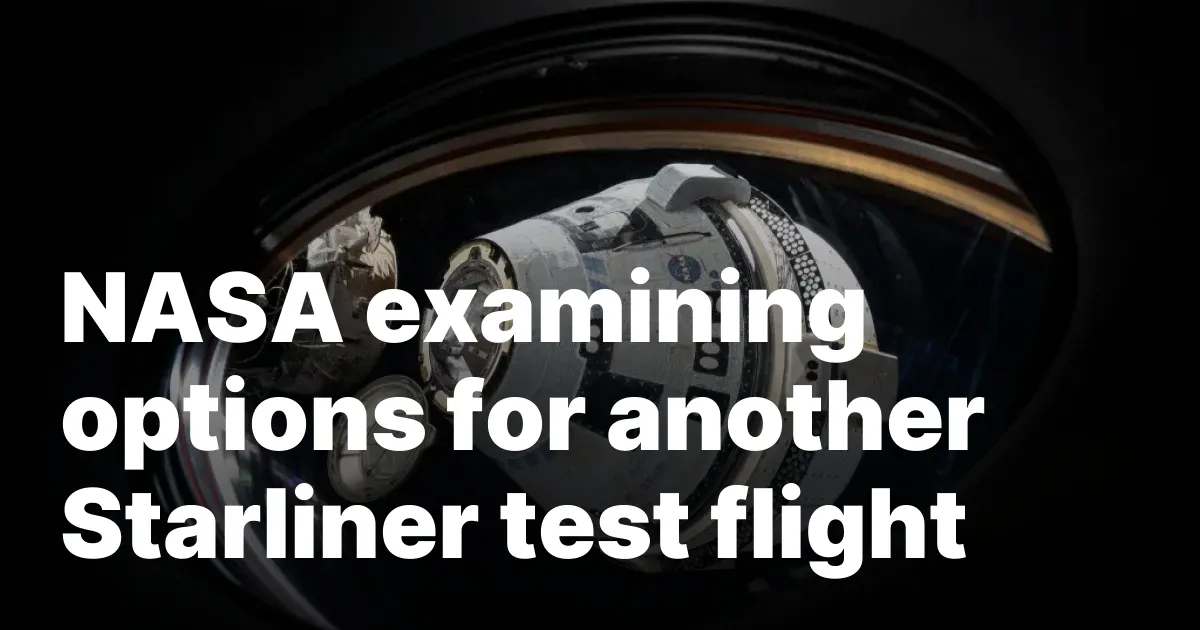
BOULDER, Colo. — NASA is currently assessing potential options for another test flight of Boeing’s CST-100 Starliner commercial crew vehicle. This comes before the vehicle is set to embark on regular missions to the International Space Station (ISS). During a briefing following the return of a SpaceX Crew Dragon spacecraft, which successfully completed the Crew-9 mission to the ISS on March 18, Steve Stich, the NASA commercial crew program manager, indicated that the agency anticipates conducting another Starliner test flight—whether or not it will carry astronauts—prior to commencing crew rotation flights.
Stich elaborated on the agency's strategy, stating, “What we’d like to do is that one flight and then get into a crew rotation flight.” He emphasized that the upcoming test flight would focus on evaluating all modifications made to the Starliner vehicle. Following this test, the goal is to transition Boeing into regular crew rotation missions. “So, the next flight up would really test all the changes we’re making to the vehicle,” he added.
The modifications to the Starliner primarily involve its propulsion system, which previously faced challenges including helium leaks and thruster failures during the Crew Flight Test (CFT) mission last year. These significant issues led NASA to return Starliner uncrewed, necessitating that NASA astronauts Suni Williams and Butch Wilmore, who had flown to the ISS on Starliner for a brief stay, remain aboard the station until the end of the Crew-9 mission.
“The thing that we need to solidify and go test is the prop system in the service module,” Stich explained. “We need to ensure we can eliminate the helium leaks and resolve the service module thruster issues that we encountered during docking.” The forthcoming test flight may be uncrewed but will be designed to support crews. “Even if we were to fly the vehicle without a crew in the return,” he noted, “we want that to be crew-capable, so we want it to have all the systems in place that we could fly a crew with.”
Since Starliner’s uncrewed return to Earth last September, neither NASA nor Boeing has provided extensive updates on their efforts. However, during a separate briefing on March 7, prior to the Crew-10 launch to the ISS, Stich mentioned that progress has been made, with 70% of the in-flight anomalies from the CFT mission addressed. Despite ongoing propulsion issues that require further study and testing, he expressed confidence in Boeing's commitment to the Starliner program. Boeing has incurred charges against earnings exceeding half a billion dollars for Starliner in 2024 alone, with a cumulative total surpassing $2 billion throughout the program’s duration.
“Boeing, all the way up to their new CEO, Kelly Ortberg, has been committed to Starliner,” Stich remarked, highlighting the extensive efforts the company is making to test new seals aimed at eliminating helium leaks and conducting “multifaceted” thruster tests. “I see a commitment from Boeing to continue the program. They realize that they have an important vehicle, and we are very close to achieving the capability that we would like to field.”
Aside from the propulsion system modifications, Stich noted that Starliner has provided NASA with much of the necessary data required for the certification of the vehicle for crewed flights. Any upcoming test flight will be part of the “post-certification” phase under Boeing’s current contract, though it remains uncertain if it will count as one of the six post-certification missions included in that agreement.
Stich emphasized that there is no immediate urgency to finalize plans for the Starliner, including the timeline for when it might commence crew rotation missions. SpaceX is scheduled to conduct the next crew rotation mission, Crew-11, with a launch anticipated in late July. This timing is influenced by a cargo Dragon mission slated for launch in August, which will remain at the ISS for an extended period to test its ability to reboost the station.
As of now, NASA has not determined whether Crew-11 will be succeeded by another Crew Dragon mission, Crew-12, or the inaugural crew rotation flight of Starliner. “We probably have a little bit more time as we get into the summer and understand the testing we’re going to conduct to make that decision,” Stich concluded.